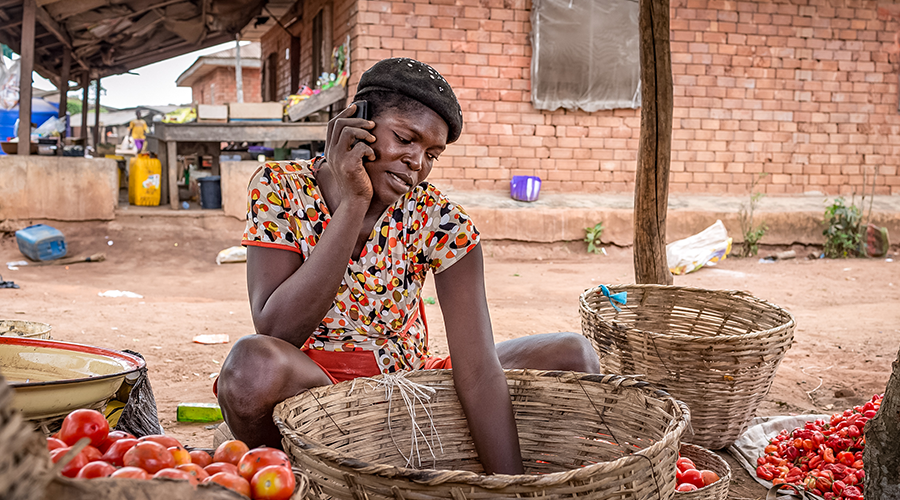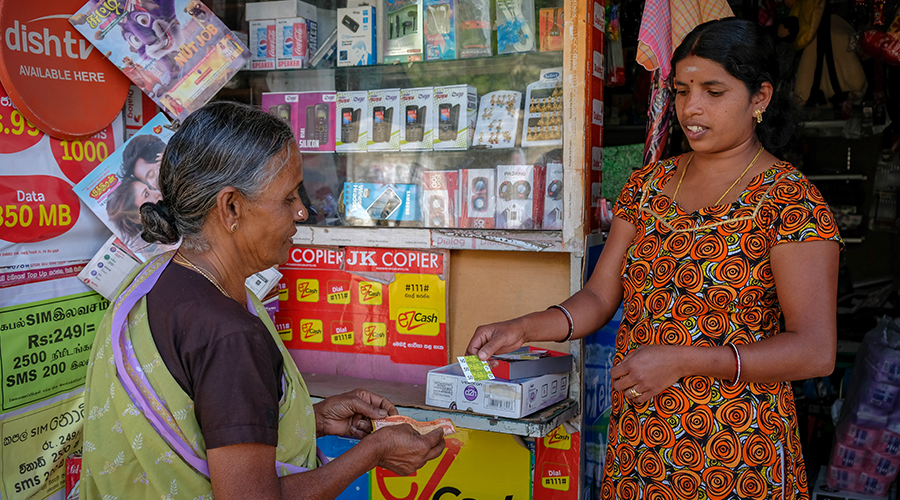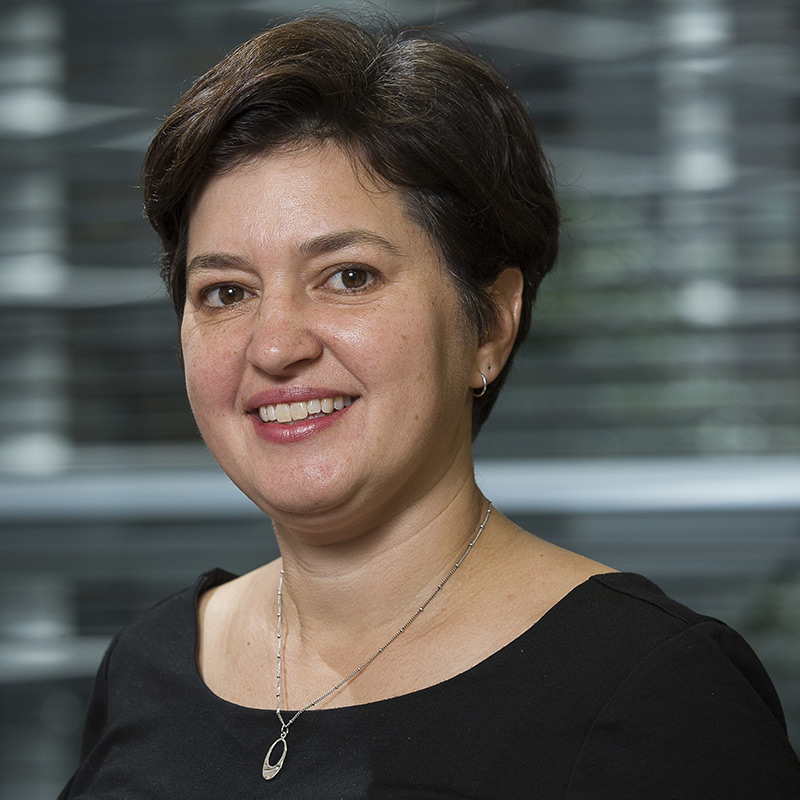#InspireInclusion: Latest data and commitments
The theme for this year’s International Women’s Day is “Inspire Inclusion”, and we are sharing a preview of some of our updated figures on the mobile internet gender gap in advance of publishing our Mobile Gender Gap Report 2024 in May. We are also announcing bold new commitments by the mobile industry to accelerate digital and financial inclusion for women. We hope that by doing so we will inspire others to take action.
Mobile is connecting more people to the internet than ever before. In low- and middle-income countries (LMICs) it is the primary – and often only – way that most people access the internet, particularly women. However, in an increasingly connected world, women are being left behind. This is important because mobile internet provides significant benefit to women, their families and economies, providing access to critical information and services and contributing to the achievement of the SDGs. In our research across 12 LMICs most women who use mobile internet said that they use it every day, and that it positively impacts their lives.

The mobile internet gender gap: Our latest data
Last year on International Women’s Day, we shared that for a second year in a row there was a slowdown in digital inclusion for women and that once again progress in reducing the mobile internet gender gap had stalled. After years of progress women were being disproportionately negatively impacted in the immediate aftermath of the COVID-19 pandemic and the mobile internet gender gap had widened slightly.
Our latest data shows that the mobile internet gender gap in LMICs narrowed from 19% in 2022 to 15% in 2023. This brings the mobile internet gender gap back to where it was in 2020. This reduction has been driven primarily by South Asia where it decreased from 41% in 2022 to 31% in 2023. The gender gap in Sub-Saharan Africa has narrowed somewhat in 2023 (from 36% in 2022 to 32% 2023) but is not significantly lower than what it was in 2017 (34%). This gap has remained relatively unchanged in the other regions.
This reduction in the mobile internet gender gap across LMICs was due to women adopting mobile internet at a faster rate than men. In fact, in 2023 fewer men started using mobile internet compared to 2022, but there was an increase in the rate of adoption by women. While the narrowing in the mobile internet gender gap represents a promising shift compared to the previous two years, it is not yet clear if women’s rate of mobile internet adoption will continue to increase and whether the mobile internet gender gap will continue to narrow.
When women start using mobile internet, they tend to use it less frequently than men and for a narrower range of services. New data this year that will feature in the Mobile Gender Gap Report 2024 will show what barriers prevent female, and male, mobile internet users from using it more than they already do.
Our data indicates that much more needs to be done to accelerate digital inclusion and close the mobile gender gap. Progress has stalled in recent years and while there has been some progress in the last year, the gender gap in mobile internet remains substantial. Targeted action is needed to both address the mobile internet gender gap as well as ensure that everyone is able to benefit from connectivity.
Mobile industry driving commitments, action and reducing gender gaps
We are pleased to announce that 22 mobile operators have made or renewed their commitment to reduce the gender gap in the customer base of their mobile internet and/or mobile money services as part of the GSMA Connected Women Commitment Initiative. This includes commitments in the regions where we consistently observe the most significant and persistent gender gaps and in countries where there are some of the largest numbers of women who are not using mobile internet and mobile money services. We are working with mobile operators committed to reducing the digital gender gap in six of the seven countries with the largest number of unconnected women: India, Pakistan, Bangladesh, Indonesia, Nigeria and Ethiopia, where cumulatively more than 425 million women are not using mobile internet today.
Since the Connected Women Commitment Initiative was launched in 2016, more than 50 mobile operators have made formal commitments with targets to accelerate women’s digital and financial inclusion and have collectively reached over 70 million women to date. Where we have analysed the data we are seeing that almost without exception partners are successfully reducing the gender gaps in their customer base. Bold commitments with clear targets and actions that focus on the key barriers women face is making a difference.
Connected Women Commitment Partners are actively working to tackle the barriers women face including by:
- Increasing awareness of relevant use cases and the benefits of mobile internet and mobile money for women (e.g. through marketing campaigns)
- Improving affordability of internet-enabled devices (e.g. through handset financing schemes)
- Increasing knowledge and skills (e.g. through digital skills campaigns)
- Improving safety and security (e.g. by enabling customers to privately recharge their credit or data to minimize risk of harassment)
- Ensuring services are relevant for women (e.g. by adapting mainstream products and services to better meet women’s needs)
See who the Connected Women Commitment partners are and read more about their commitments and the actions they are taking on our Commitment Initiative page.

Action required by all stakeholders
What we know is that the digital and mobile gender gap is not going to close on its own and that greater focus and investment is needed to really move the needle and accelerate progress. Our Connected Women Commitment Partners have highlighted that setting clear targets and taking informed, targeted action makes a difference. But these gender gaps are driven by a complex set of social, economic and cultural factors that cannot be addressed by one organisation alone. Further action is required by policymakers, industry, the development community and other stakeholders working together to better measure, understand and address women’s needs and the barriers they face.
Data on the mobile gender gap and barriers faced by women is vital to measure progress and inform this action. Our upcoming Mobile Gender Gap Report 2024 will provide a much more detailed analysis of the gender gap in mobile ownership, smartphone ownership and mobile internet use across LMICs. We are grateful to the UK Foreign, Commonwealth & Development Office (FCDO), the Swedish International Development Cooperation Agency (SIDA) and the Bill & Melinda Gates Foundation for their support in enabling us to continue to collect and share this data.
We are also pleased to have been selected, along with CARE and GDIP, as the consortium partners to manage the Women in the Digital Economy Fund (WiDEF), a five-year $60 million initiative funded by the United States Agency for International Development (USAID) and the Bill & Melinda Gates Foundation (BMGF). The WiDEF consortium will identify, directly fund and accelerate investment in proven solutions to close the gender digital divide.
Our work and that of our partners will hopefully inspire further action to drive digital and financial inclusion for women. It is critical that we accelerate progress to ensure that women are not being left behind.
When women thrive, society, businesses and economies thrive.
Our Mobile Gender Gap Report 2024 will be available here from May 2024. To receive the latest updates from Connected Women including the report please sign up to our newsletter here. To stay up to date on WiDEF work and activities subscribe here.
The Connected Women programme is funded by the UK Foreign, Commonwealth & Development Office (FCDO) and the Swedish International Development Cooperation Agency (SIDA), and is supported by the GSMA and its members.



